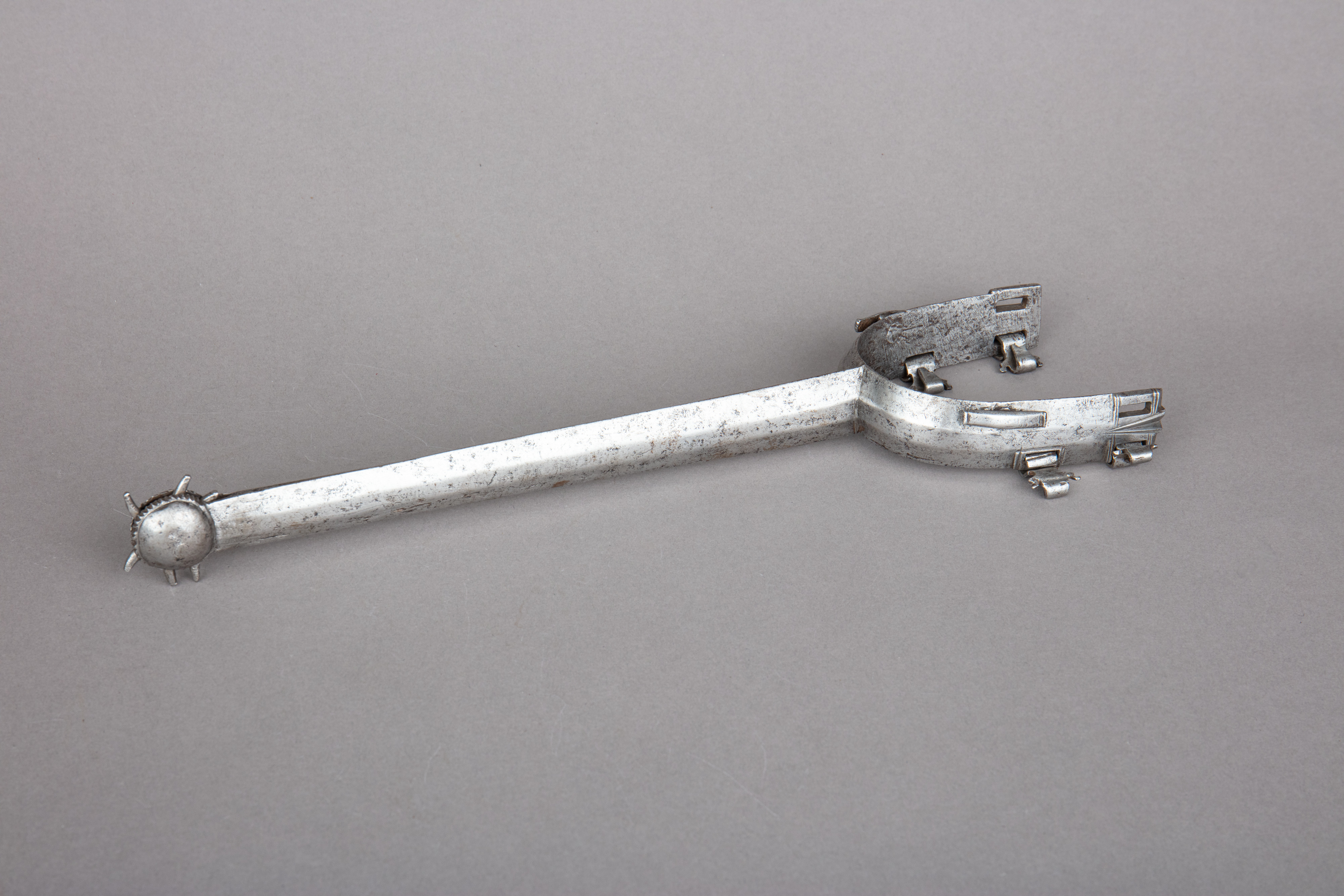Tournament Rowel Spur
Not on view
The rowel of this tournament spur is featured with a ball at the end for preventing the spikes from penetrating too far in the horses' flanks.
Around 1400, the length of the rowel spurs’ necks started to increase in western Europe, some examples extending even as long as the rider’s foot in the 15th century. At this period, the elevated war saddles and the very specific riding style, with long stirrup leathers and legs extended forward, had the consequence of taking away the rider’s feet from the horse’s flank. Thus, these long necks gave them easier access without having to disturb the rider’s position too much.
As the riding position changed at war in the first decades of the 16th century, such long necks were not needed anymore. However, they were kept in use for jousting, for which the medieval riding style survived a bit longer.
Due to rights restrictions, this image cannot be enlarged, viewed at full screen, or downloaded.
This artwork is meant to be viewed from right to left. Scroll left to view more.



